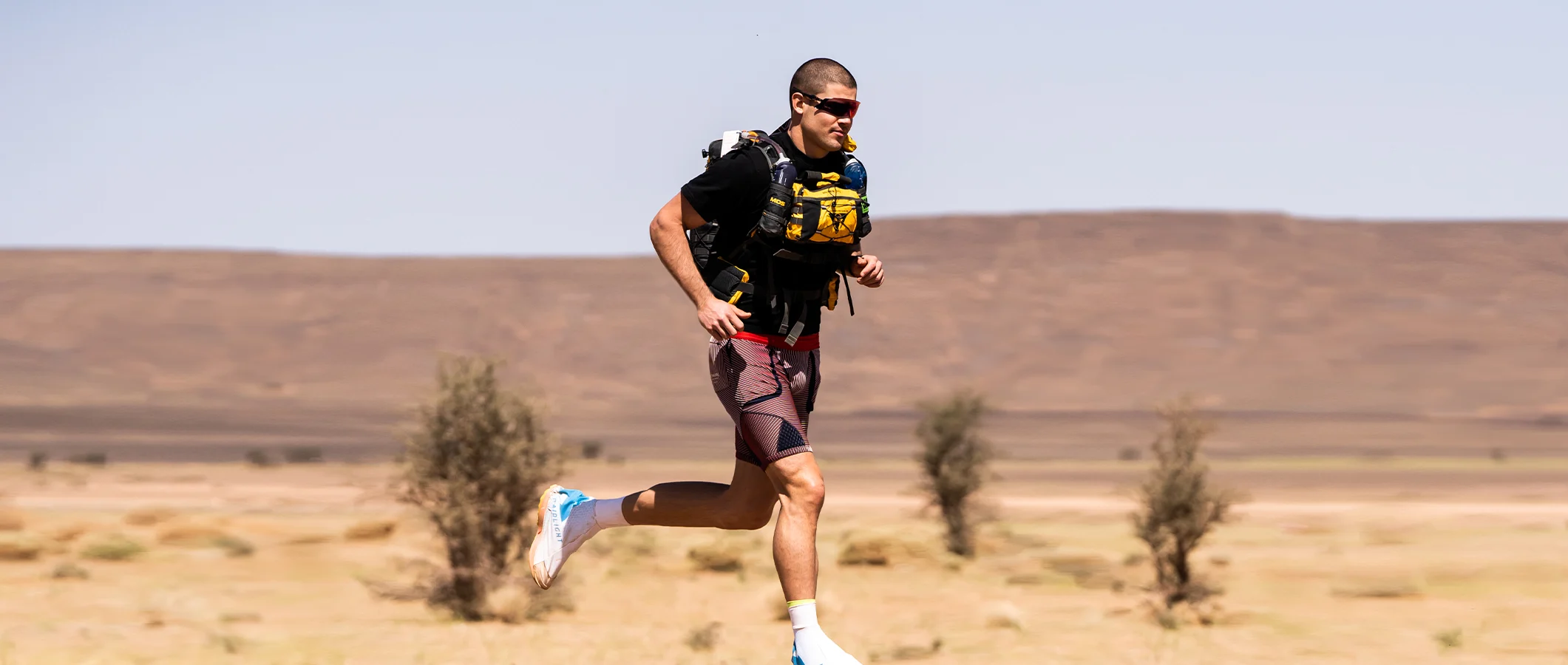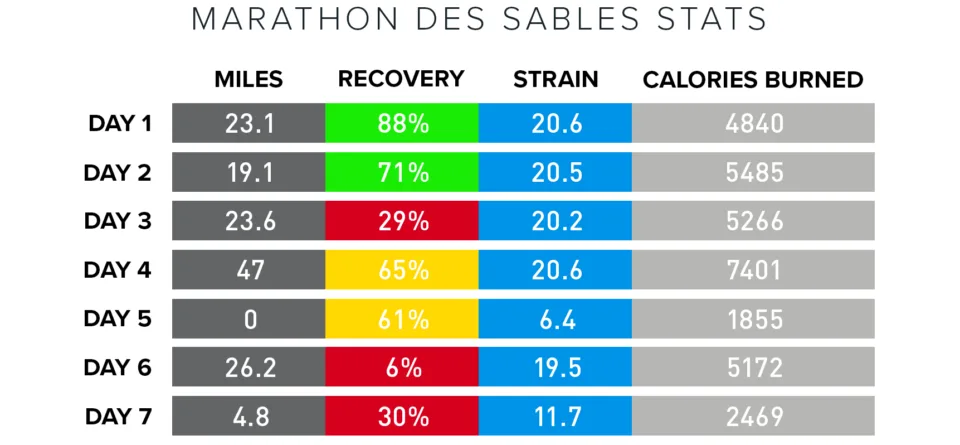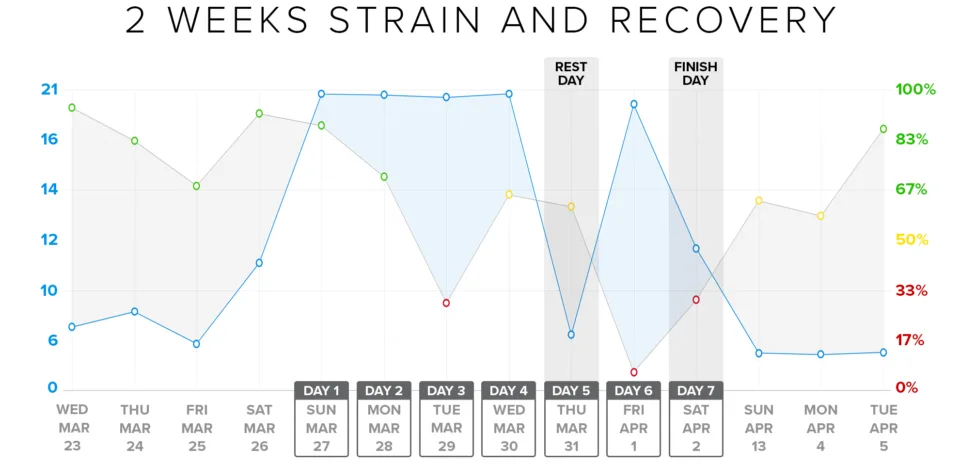Topics
- Article
- International
- Member Stories
- Running
- Strain
Strain of Running 144 Miles In the Sahara Desert

William Goodge just completed the Marathon des Sables, a week-long 144-mile ultramarathon through the Sahara Desert. Here’s what we saw in his WHOOP data.
Last fall we told you the story of WHOOP member and ultrarunner William Goodge, who ran 48 marathons in 30 days while raising money to fight cancer in memory of his late mother. William’s latest superhuman feat? Conquering the Marathon des Sables, widely regarded as the toughest foot race on the planet.
What is the Marathon des Sables?
If you type “Marathon des Sables” into your search browser, the next word that likely follows is “deaths” (3 participants have died during it in the past 36 years). The race lasts 7 days, and consists of 6 stages roughly the length of one marathon each–all through the Sahara Desert. Temperatures may reach 130 degrees Fahrenheit, and runners must carry all their food and everything else they need on their backs. The list of required supplies includes a compass (50-mile-an-hour sand storms can create zero visibility), an anti-venom pump in case of snake bites, and a mirror and whistle to signal for help. Water is provided at regular checkpoints every 5-9 miles, and race participants sleep in large communal tents at night.

William carrying everything he needed for the 7-day Sahara desert marathon.
Strain, Sleep & Recovery in the Desert
“This was a new challenge and experience for me,” William told us. “So much of it was climbing jebels (mountains), running on soft sand, and going over dunes. Aside from the physical toll of completing those distances carrying a pack that started at 12.5 kgs, a lot of mental energy was used simply trying to find the most efficient route.” William’s strain topped 20 for each of the first 4 stages as he burned an average of nearly 5,750 calories per day. Here are his daily stats from the race:

William had a 20.6 strain and burned 7,401 calories on Day 4, which was the longest stage at 47 miles.
“Once the days’ running had finished, there really was nothing to do other than eat and get an early night, which meant the hours I spent in bed were actually much higher than normal,” he said. “But in an environment where there was constant noise from the other competitors and my tent mates, my sleep was far more disturbed than usual.”
“In the Green” Pre-Race & Shortly After
Below is a two-week sample of William’s daily strain and recovery. Low strain prior to the race enabled him to hit the starting line with a nice string of green recoveries, including 88% for Stage 1. William managed to keep his recovery in the green for the second day as well, but after that the immense strain and harsh conditions quickly began to take their toll.

William got his recovery back to 87% just two days after completing the grueling desert ultramarathon.
The day of “rest” did William little good following the race’s brutal 4th stage (47 miles, a 20.6 strain and 7,401 calories burned), as his Day 6 recovery was just 6%. “The long stage on Day 4 had a 36-hour time window,” he explained. “Even though myself and a lot of competitors finished within 16 hours, on the fifth day people were constantly in and out of the tent recovering or still finishing off. It was my worst night’s sleep of the competition.” However, William pushed through and completed the race with a time of 35 hours, 23 minutes and 55 seconds. Amazingly, it only took William two days of post-race recuperation (with strains below 5 each day) to get his recovery back to green–and it’s a good thing too, because he’s running the Zurich marathon on April 10.